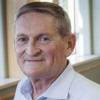
Between 3-5% of adults harbor an intracranial aneurysm, and subarachnoid hemorrhages (SAH) resulting from ruptured aneurysms are associated with a mortality rate of 10-25% with an additional 30% of patients suffering permanent disability. Inflammation plays a central role, driving the morbidity associated with SAH. Despite understanding the important role of inflammation in morbidity following SAH, the current barrier is that there is no effective methodology to modulate the deleterious inflammatory response in patients following SAH. Due to this gap, there is a critical need for a novel approach to immunomodulation that can be safely, rapidly, and effectively deployed in SAH patients. Vagus nerve stimulation (VNS) provides a novel, non-pharmacologic approach to immunomodulation. Studies have demonstrated VNS to reduce systemic inflammatory markers and VNS has had early success treating inflammatory conditions such as arthritis4, sepsis5, and inflammatory bowel diseases. Our long-term goal is to translate the use of non-invasive transcutaneous auricular VNS (taVNS) to reduce morbidity and improve outcomes in patients following spontaneous SAH. The overall objectives for this application in pursuit of achieving this goal are to (i) demonstrate the impact taVNS has on a key inflammatory marker in the blood and CSF in patients following SAH, and (ii) determine if taVNS reduces the incidence of inflammation-mediated sequelae of SAH by performing a prospective, randomized controlled trial. Our central hypothesis is that implementing taVNS in the acute period following spontaneous SAH will attenuate the expected inflammatory response to hemorrhage and will curtail morbidity associated with inflammatory-mediated clinical endpoints (i.e., vasospasm, hydrocephalus). Our hypothesis has been formulated based on preliminary findings where our team applied taVNS in a cohort of SAH patients leading to reductions in white blood cell count, TNF- α, and IL-6 in the CSF, as well as early evidence of decreased vasospasm and chronic hydrocephalus. Guided by this preliminary data, we will test our central hypothesis with the following specific aims: 1) Define the impact that transcutaneous auricular vagus nerve stimulation has on a key subarachnoid hemorrhage-induced inflammatory marker, TNF-α, in the serum and cerebrospinal fluid (CSF), 2) Determine that taVNS following SAH reduces angiographic vasospasm, and 3) Determine that taVNS following SAH reduces chronic hydrocephalus. We will perform a randomized controlled study on aneurysmal SAH patients where we will test whether twice daily treatment with taVNS compared to sham will alter these physiologic and clinical endpoints. This project is innovative because it diverges from the pharmacologic status quo by harnessing a novel non-invasive neuromodulatory approach and its known anti- inflammatory effects to alter the pathophysiology of SAH. The development of a new and effective intervention in SAH will be significant because this work will create the foundation of knowledge for advancing non-invasive taVNS to reduce the societal and personal burden of post-SAH morbidity.
 Drs. Leuthardt and Chen were awarded with a 5-year NIH/NCI U01 grant to develop 'Sonobiopsy for Noninvasive Genetic Evaluation of Glioblastoma Patients.'
Drs. Leuthardt and Chen were awarded with a 5-year NIH/NCI U01 grant to develop 'Sonobiopsy for Noninvasive Genetic Evaluation of Glioblastoma Patients.'
 NCAN Collaborator Dr. Bob Knight has received continuous funding for his investigation into 'Attention, Orientation and the Human Prefrontal Cortex' since 1985.
NCAN Collaborator Dr. Bob Knight has received continuous funding for his investigation into 'Attention, Orientation and the Human Prefrontal Cortex' since 1985.

